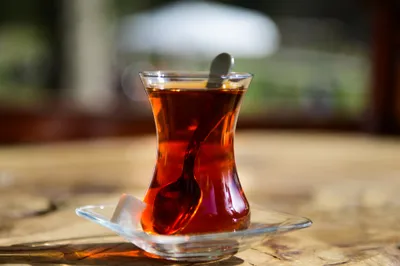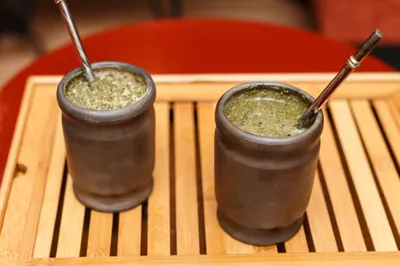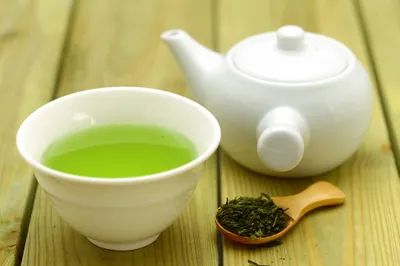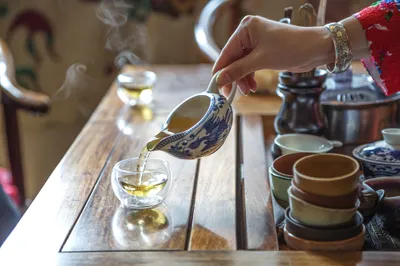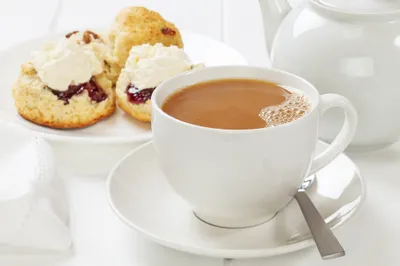When it comes to sipping a cuppa around the globe—tea is one of the most popular brewed beverages! From promoting relaxation to warding off all sorts of digestive disorders, mental health woes, and chronic diseases—tea is “steeped” in many long-standing social and traditional customs around the world.
Here are six of the largest tea-drinking countries around the globe…
1. In Taiwan…
If you live in North America, you’ve likely had the pleasure of a creamy or icy cup of Bubble Tea! This smoothie-like beverage of Taiwanese favorite descent has gained traction in the U.S. over the past few years, prepared either as brewed tea blended with fruit syrup and milk—or as tea blended with ice, milk, and fruit, similar to a slushy.
What sets bubble tea, or pearl milk tea, apart from other popular teas is the tapioca pearls. In addition to the enjoyment that comes from sucking them through the thick straw, keep in mind that most bubble teas are high in calories and sugar, especially if they’re made with condensed milk. According to information from the American Heart Association, bubble tea can extend the recommended limit of 6-teaspoons of added sugar per day for females and 9-teaspoons for men. With 1/2 cup of cooked tapioca pearls, 1/4 cup sugar, and 1/8 cup sweetened condensed milk per bubble tea, you’re looking at roughly 450 to 500-calories per beverage!
2. In Turkey…
The Turkish also love their tea, which is the most popular hot beverage (even compared to coffee, which is extremely pricy) in Turkey as well as its neighbouring nations. The taste of Turkish tea, which is almost always black tea or herbal in nature with no milk, is likely as exquisite as the presentation. Turkish tea is served in dainty tulip glasses, which display the brew’s unique hue.
Turkish black tea has been linked by several studies to a reduced risk of obesity and diabetes, largely thanks to the healthy dose of antioxidants in each glass. For instance, a study from Boston University’s School of Medicine monitored the tea drinking habits of 66 men for a period of 4-months during which time participants either drank 4-cups of black tea each day or a placebo. The findings proved that drinking black tea improved blood vessel functioning, and lowered stroke and heart attack risk over the long run.
3. In South America…
In South America—particularly in Argentina, Brazil, and Uruguay—Yerba Mate is the tea of choice. However, interestingly enough yerba mate is not necessarily considered a tea in many brewing circles. Yerba mate is often called a tea due to its preparation method—the dry leaves of the Yerba plant is steeped in boiling water to prepare the beverage, which tastes similar to green tea.
According to research from Web MD, the health benefits stemming from the mate plant include improving mood, treating urinary tract infections, relief of mental and physical fatigue (i.e., chronic fatigue syndrome), and even for treating kidney stones. And, since yerba mate is high in caffeine for tea, but lower in caffeine compared to coffee—it makes a low caffeine alternative to a cup of morning java.
4. In Japan…
Green tea rules in Japan, where you’ll find this herbal and antioxidant rich brew has a bolder, grassier taste in each sip. Green tea has long been linked to many health benefits. For instance, in addition to being a well-known cancer-fighter, green tea is linked to the prevention of cardiovascular disease, high cholesterol, and lowers the risk of diabetes.
Research as recent as October 2014 from Harvard Medical School, notes that the health benefits of green tea are largely thanks to its high content of flavonoids—antioxidant plant-derived compounds—and catechins, which ward off the damage of oxidative stress on the cells and prevent several cancers, including, bladder, colon, lung, skin, breast, and esophageal cancers.
5. In China…
The bolder taste of black tea is preferred above other brews in China. In fact, strong black tea is sipped in abundance as part of tea ceremonies and even just with meals—every meal of the day, every day—as well as traditional Chinese tea houses! Fortunately, the American College of Medicine links drinking black tea to lower bad (LDL) cholesterol and better blood sugar (or insulin) control.
If you’re fortunate enough to participate a traditional Chinese tea brewing ceremony, you’ll discover that there is an art to preparing and drinking tea. Each ceremony is unique, but all center on the sensory—including focusing on tea smell, taste, and sipping method in rounds of tea drinking.
6. In England…
Between the hours of 2pm and 5pm, afternoon tea is serious business in England—with a creamy cup of Earl Grey Tea with milk and sugar at the top of mind. The naturally citrus-tang of this brew is a star at British ‘High Teas,’ which is made up of a light snack and a strong cuppa.
However, according to several studies, there are beneficial health reasons to break for afternoon tea as well—including the promotion of digestion, oral health, heart health, and more. A 2012 study, published in the journal, Preventative Medicine, found that drinking 3 cups of Earl Grey tea daily significantly lowered blood triglyceride levels and increased HDL (or good) cholesterol over a 3-month period.


